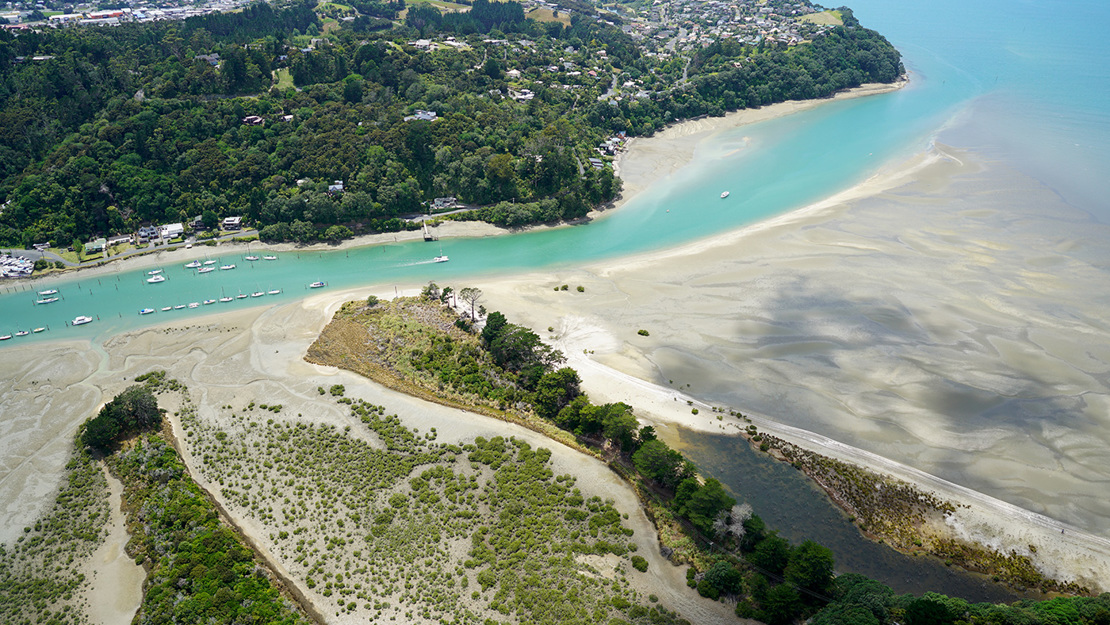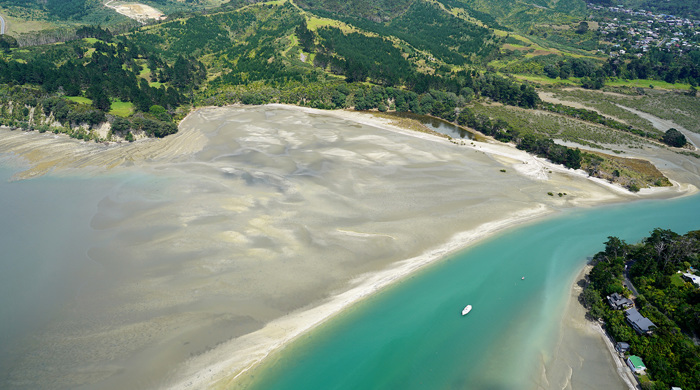Weiti River Shell Barrier
The shell barrier beaches at Weiti River mouth are a good example of this critically endangered ecosystem in Tāmaki Makaurau / Auckland. This area and the adjacent intertidal flats provide important roosting and foraging habitat for shorebirds.
Size: 8.4 hectares
Site description
The Weiti River Shell Barrier biodiversity focus area is located within a public reserve at the mouth of the Weiti River near Stillwater.
It contains a series of chenier-type shell barrier beaches (SA1.5) which have formed within the tidal estuary. The shell barriers are considered to be internationally significant landforms. They have been used to derive sea level history for the past 10,000 years. They are also highly valuable habitat for native and migratory wading birds who roost on the shell barriers at high tide.
Weiti River and estuary is a drowned river valley system. The series of shell barriers have grown across the estuary in a northerly direction, sheltering the inland waters from the open coastal environment. Mangroves and saltmarsh (SA1) have established in the more sheltered waters.

Shell barrier beaches
The chenier-type shell barriers are recognised as a globally rare ecosystem type. In Aotearoa / New Zealand they are threatened, as many have been lost to development or other impacts. Nationally, they are identified as a critically endangered ecosystem.

Native fauna
Tūturiwhatu (New Zealand dotterel) nest at the Weiti shell barrier beach. Other species recorded here and in the nearby saltmarsh include:
- pāteke (brown teal)
- kāruhiruhi (pied shag)
- tōrea pango (variable oystercatcher)
- tōrea (South Island pied oystercatcher)
- kuaka (bar-tailed godwit)
- poaka (pied stilt).
Threats and management
Shell barrier beaches can be very weedy. Pest plants found here include:
- pampas
- periwinkle
- kikuyu
- buffalo grass
- boneseed
- climbing asparagus
- gorse.
A weed control programme is being implemented by Auckland Council and the community to reduce pest plant infestations and increase the habitat value for native species.



